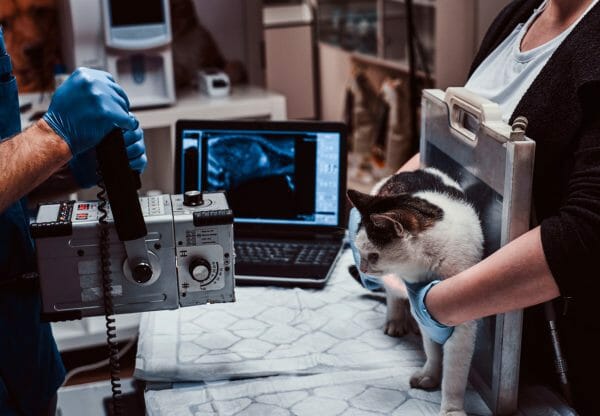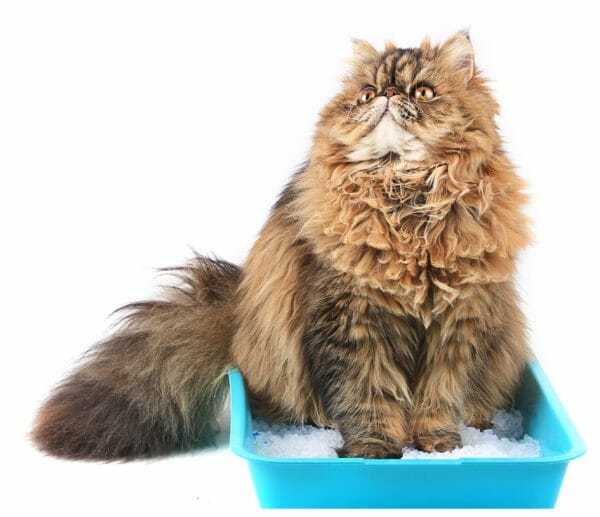What Is Arthritis in Cats?
Arthritis in cats (also called feline osteoarthritis) is a common degenerative disease that causes the joints to swell. This swelling makes movement difficult and uncomfortable. Often mistaken for a natural “slowing with age,” this disease can severely impact a cat’s mobility.
Arthritis can affect any joint in a cat’s body. However, it is found predominantly in the spine and legs. Often brought about by natural wear and tear on the joints, the condition generally affects older felines. In certain circumstances, younger animals can also be affected.
What Causes Arthritis in Cats?
Although most arthritis is brought on by the deterioration of the joints, other causes include:
- Injuries, such as a fractured joint
- Abnormalities in hip development that may affect joint cartilage
- Certain cat breeds are at a higher risk of this disease, including the Persian, Siamese, Scottish Fold, and Maine Coon.
- Hip Dysplasia—a condition where the thigh bone does not fit the hip joint correctly
- Luxating Patella—a condition in which the kneecap becomes dislocated
- Acromegaly—a condition in older felines in which the pituitary gland secretes excess growth hormone. Felines with this condition often develop diabetes mellitus and arthritis.

Although it may not be a direct cause, an obese cat can also exacerbate the onset of the arthritis in cats. Ensuring that a feline eats a healthy diet and gets plenty of exercise will help prevent further degeneration.
In a healthy joint, bones have smooth surfaces and enough fluid to help them move around. When a cat has arthritis, the surface of the bone is worn down. Instead of gently sliding against each other, the joints in an arthritic cat rub like sandpaper. This brings about pain and swelling.
As time progresses, the arthritic joints grow stiffer and thicker. This is due to the production of extra bone that is not needed. This additional bone gets in the way and makes moving even more difficult.
There are no cures for this disease. However, treating cats with arthritis in an effort to minimize inflammation and pain is possible. There are also several measures that can be put in place to improve a cat’s quality of life.

Cat Arthritis Symptoms
Understanding and identifying the signs of this disease is key to ensuring the cat is treated for the condition. The symptoms of arthritis in cats include:
- Limping
- Stiffness around the legs, particularly after rest or sleep
- Reluctance to jump
- Problems climbing stairs
- Difficulty using a litter box
- Reduced activity levels
- Neglecting to groom or overgrooming
- Irritability
- Inability to jump high
- Hiding
- Sleeping more than usual
There may also be noticeable changes in the cat’s posture. In addition, a feline’s shoulder blades may become more prominent.

How Is Arthritis in Cats Diagnosed?
When a veterinarian believes a cat has arthritis, they will review its medical history and carry out a full physical examination. The veterinarian will be looking for the following:
- Indications of joint deformity
- Reduced mobility
- A grating or scraping noise coming from the joints
- Instability of the joints
- Fluid on the joint
- Signs of joint pain
To confirm the diagnosis, the veterinarian will take X-rays to look for wear and tear on the cat’s joints. Blood tests may also be taken to rule out any other condition.
Cat Arthritis Treatment
Following a confirmed diagnosis, a veterinarian may recommend one or more forms of treatment. Arthritis in cats’ treatment options include:
- Non-steroidal anti-inflammatory drugs (NSAIDs). This is the most common form of cat arthritis medicine. These must be prescribed by a licensed veterinarian.
- Pain management. When NSAIDs are unsuitable, painkillers may be used. Commonly prescribed drugs include Onsior, Buprenorphine, Tramadol, Amantadine, or Gabapentin for cats with arthritis.
- Cold laser treatment or photobiomodulation (PBMT). This is a pain free, non-invasive treatment in which a veterinarian uses a device emitting therapeutic light waves to reduce inflammation and pain.
- Injectable joint protectants. The veterinarian will inject glycosaminoglycans at four-week intervals to relieve the cat’s arthritic pain.
Medicine for cats with arthritis should only be administered under the recommendation and supervision of a veterinarian. Owners should seek a full diagnosis before exploring treatment options. If an injury or a condition such as hip dysplasia or patella luxation is the cause of the disease, surgery may be an option. This may involve surgically fusing a joint so that it no longer causes pain.

How to Help a Cat with Arthritis
Due to the decreased mobility of a cat with arthritis, making sure the home environment is safe and comfortable should be an owner’s main priority. This can be achieved by:
- Providing a soft, warm bed that the cat can easily enter and exit.
- Keeping the cat’s food, water, litterbox, and bed on one floor of the house.
- Using raised food and water bowls to prevent a cat from having to bend.
- Ensuring easy access to the cat’s litterbox.
- Assisting with grooming.
- Providing heated blankets or a hot water bottle to ease pain.
There are many great arthritis products for cats. Owners with felines suffering from arthritis should consider one or more of the following:
- Use steps or ramps for cats with arthritis that make it easier to climb onto furniture.
- Litterboxes that have low sides allowing for easy access.
- Joint supplements for cat arthritis, including chondro protectants that promote cartilage growth, green tipped mussel extracts, and combinations of glucosamine and chondroitin sulfate.
- Natural arthritis relief for cats involves ensuring a healthy diet is available so that weight levels are controlled and providing exercise opportunities to keep joints moving.
Cats with arthritis may also benefit from massage and physical therapy to alleviate some of the symptoms and to ensure that the joints remain active.
How Long Can a Cat Live with Arthritis?
Arthritis will continue to worsen over time. By seeking the assistance of a veterinarian, using the correct arthritis medication for cats, and taking steps to make the feline’s life as easy as possible, most felines will have a good quality of life for many years. Having arthritis does not shorten the cat’s expected lifespan.




